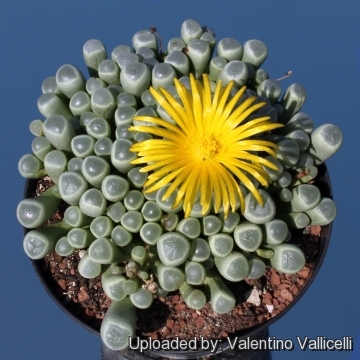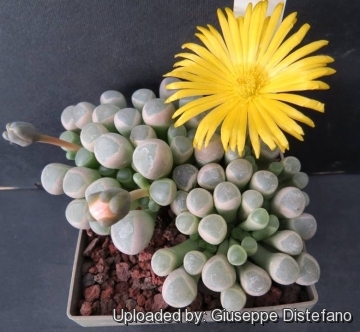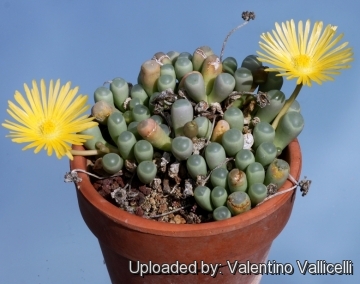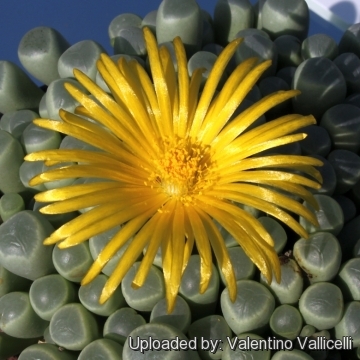Donate now to support the LLIFLE projects.
Your support is critical to our success.
Your support is critical to our success.
Fenestraria aurantiaca
in Phillips, Gen. S. Afr. Fl. Pl. 246 (1926).; et in Gard. Chron. 1927, Ser.III. lxxxii. 263
Family: AIZOACEAE
in Phillips, Gen. S. Afr. Fl. Pl. 246 (1926).; et in Gard. Chron. 1927, Ser.III. lxxxii. 263
Family: AIZOACEAE
Accepted Scientific Name: Fenestraria rhopalophylla subs. aurantiaca (N.E.Br.) H.E.K.Hartmann
Bot. Jahrb. Syst. 103(2): 180. 1982 [12 Nov 1982]

Fenestraria aurantiaca (Fenestraria rhopalophylla subs. aurantiaca) Photo by: Valentino Vallicelli
Synonyms:
- Fenestraria rhopalophylla subs. aurantiaca (N.E.Br.) H.E.K.Hartmann
- Fenestraria aurantiaca N.E.Br.
See all synonyms of Fenestraria rhopalophylla
back
Accepted name in llifle Database:Fenestraria rhopalophylla (Schltr. & Diels) N.E.Br.
Gard. Chron. 1927, Ser. III. lxxxii. 263.
Synonymy: 3
- Fenestraria rhopalophylla (Schltr. & Diels) N.E.Br.
- Fenestraria aurantiaca f. rhopalophylla (Schltr. & Diels) G.D.Rowley
- Mesembryanthemum rhopalophyllum Schltr. & Diels
Fenestraria rhopalophylla subs. aurantiaca (N.E.Br.) H.E.K.Hartmann
Bot. Jahrb. Syst. 103(2): 180. 1982 [12 Nov 1982]
Synonymy: 2
- Fenestraria rhopalophylla subs. aurantiaca (N.E.Br.) H.E.K.Hartmann
- Fenestraria aurantiaca N.E.Br.
back

Fenestraria aurantiaca (Fenestraria rhopalophylla subs. aurantiaca) Photo by: Valentino Vallicelli

Fenestraria aurantiaca (Fenestraria rhopalophylla subs. aurantiaca) Photo by: Giuseppe Distefano

Fenestraria aurantiaca (Fenestraria rhopalophylla subs. aurantiaca) Photo by: Valentino Vallicelli

Fenestraria aurantiaca (Fenestraria rhopalophylla subs. aurantiaca) Photo by: Valentino Vallicelli
| Your Actions | |
|---|---|
| Back to Fenestraria index | |
| Back to Aizoaceae index | |
 |
Back to Succulents Encyclopedia index |








